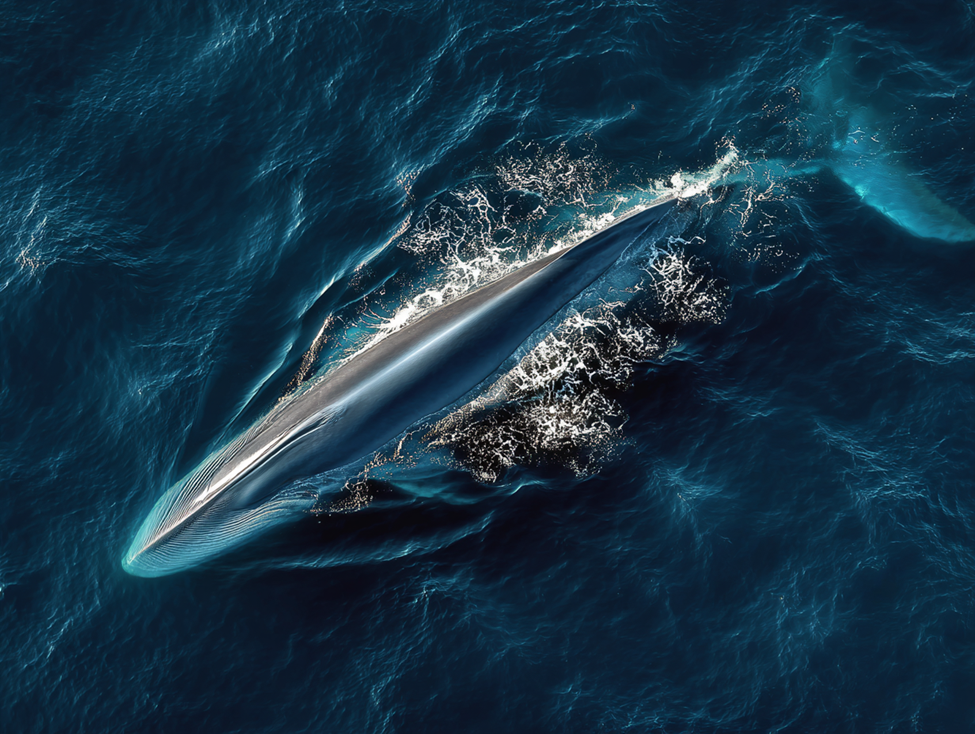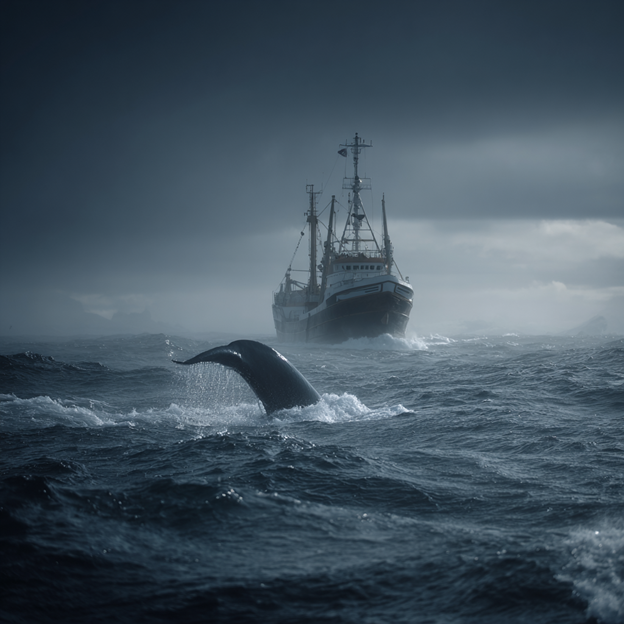The Sei Whale, Balaenoptera borealis, is the ghost of the rorqual family—elusive, unpredictable, and one of the fastest whales in the sea. Its name comes from the Norwegian word for pollock ("seje"), as both species would appear off the coast of Norway at the same time. Like the Fin Whale, it was largely ignored by early whalers who could not match its speed. But as the stocks of larger, slower whales were depleted, the Sei Whale became a primary target, with over 255,000 killed in the 20th century. Today, its story is defined by scientific obscurity and political controversy. While protected by the global moratorium on commercial whaling, the Sei Whale has been a primary target of Japan's "scientific whaling" program, a practice widely condemned as a loophole to continue commercial hunting. The Sei Whale's struggle is a powerful example of how a species' lack of public profile and the gaps in our scientific knowledge can be exploited, making it a pawn in the complex game of international whaling politics.

I. Biological Snapshot: A Scientific Profile
- Scientific Name / Genus: Balaenoptera borealis, Genus Balaenoptera, Family Balaenopteridae.
- Recognized Species & IUCN Status:
- Species: Balaenoptera borealis, with two recognized subspecies (B. b. borealis in the north and B. b. schlegelii in the south).
- IUCN Status: Endangered.
- Physical Characteristics:
- Length: 40 to 60 ft (12 to 18 m).
- Weight: Up to 50 tons (45,360 kg).
- Lifespan: 50 to 70 years.
- Distinguishing Features: A long, sleek body that is dark bluish-grey to black, with a lighter underside. It has a tall, sharply hooked dorsal fin located about two-thirds down its back. Unlike the Fin or Bryde's whale, it has a single ridge on its head and its jaw coloration is symmetrical. Its baleen plates are dark with very fine, white inner fringes, a key identifier.
- Global Population: Estimated at around 80,000, a fraction of its pre-whaling numbers.
- Distribution & Habitat: Found in all oceans, preferring deep, offshore waters in subtropical, temperate, and subpolar regions. They are known for their unpredictable distribution, sometimes appearing in an area in large numbers and then being absent for years.
- Diet & Foraging: A versatile feeder, consuming plankton (especially copepods and krill), small schooling fish, and squid. It is unique among rorquals in its ability to both lunge-feed and skim-feed at the surface.
- Reproduction: Females give birth to a single calf every 2-3 years after a gestation period of 11-13 months. Sexual maturity is reached between 6 and 12 years of age.

II. A Life in the Shadows of Controversy
The Sei Whale's life is one of movement and mystery. It is a creature of the open ocean, its migration patterns poorly understood. This elusiveness has made it difficult to study, but it did not protect it from the whaling industry. After the larger Blue and Fin whale populations crashed, whaling fleets turned their harpoons on the next largest prize, and the fast Sei Whale was now within reach of modern, steam-powered catcher boats.
The 1986 moratorium on commercial whaling should have marked the end of this threat. However, for the Sei Whale, the hunt continued under a different name. Japan's "scientific whaling" program in the North Pacific (JARPN II) targeted hundreds of Sei Whales annually. Proponents claimed the lethal hunts were necessary to gather data on the whales' age, diet, and reproductive status to inform future management. However, this justification was widely rejected by the international scientific community and the International Whaling Commission (IWC), which repeatedly passed resolutions stating that the research did not justify the killing and that the information could be obtained through non-lethal means.
The controversy came to a head when the International Court of Justice ruled against Japan's Antarctic whaling program in 2014, and a subsequent CITES ruling in 2018 found that its landing of Sei Whale products from the high seas was a violation of international trade law. In 2019, Japan withdrew from the IWC and resumed overt commercial whaling in its own waters, continuing to hunt Sei Whales. The Sei Whale's story is a powerful threshold narrative. It demonstrates how international conservation agreements can be undermined by political will and how a species can continue to be pushed towards extinction, not in the darkness of the 19th century, but in the full, complicated light of the 21st.

🔷 The North Direction Teaching 🔷
The Sei Whale embodies the North's wisdom of seeing clearly through political smoke. Its story challenges us to recognize how ignorance and obscurity become weapons, how speed alone cannot outrun exploitation, and how international agreements mean nothing without the will to enforce them. The North asks: What truths are we refusing to see? Where does our wisdom fail in the face of power?
References & Further Reading
- IUCN Red List - Sei Whale (Balaenoptera borealis)
- NOAA Fisheries - Sei Whale Species Profile
- International Whaling Commission - Scientific Permit Whaling
- Journal of Cetacean Research and Management - Sei Whale Studies
- Marine Mammal Science - Rorqual Biology and Conservation
- Scientific Reports - Sei Whale Population Genetics
- International Court of Justice - Whaling in the Antarctic Case (2014)
- CITES - Japan Whale Trade Violation Ruling (2018)
- Cambridge University Press - Sei Whale Natural History
- BioScience - The Ethics of Scientific Whaling
- ResearchGate - Sei Whale Feeding Ecology and Behavior
- World Wildlife Fund - Sei Whale Conservation Status
- NOAA Technical Memorandum - Sei Whale Population Assessment
- Endangered Species Research - Sei Whale Recovery Potential
- PLOS ONE - Molecular Ecology of Sei Whales